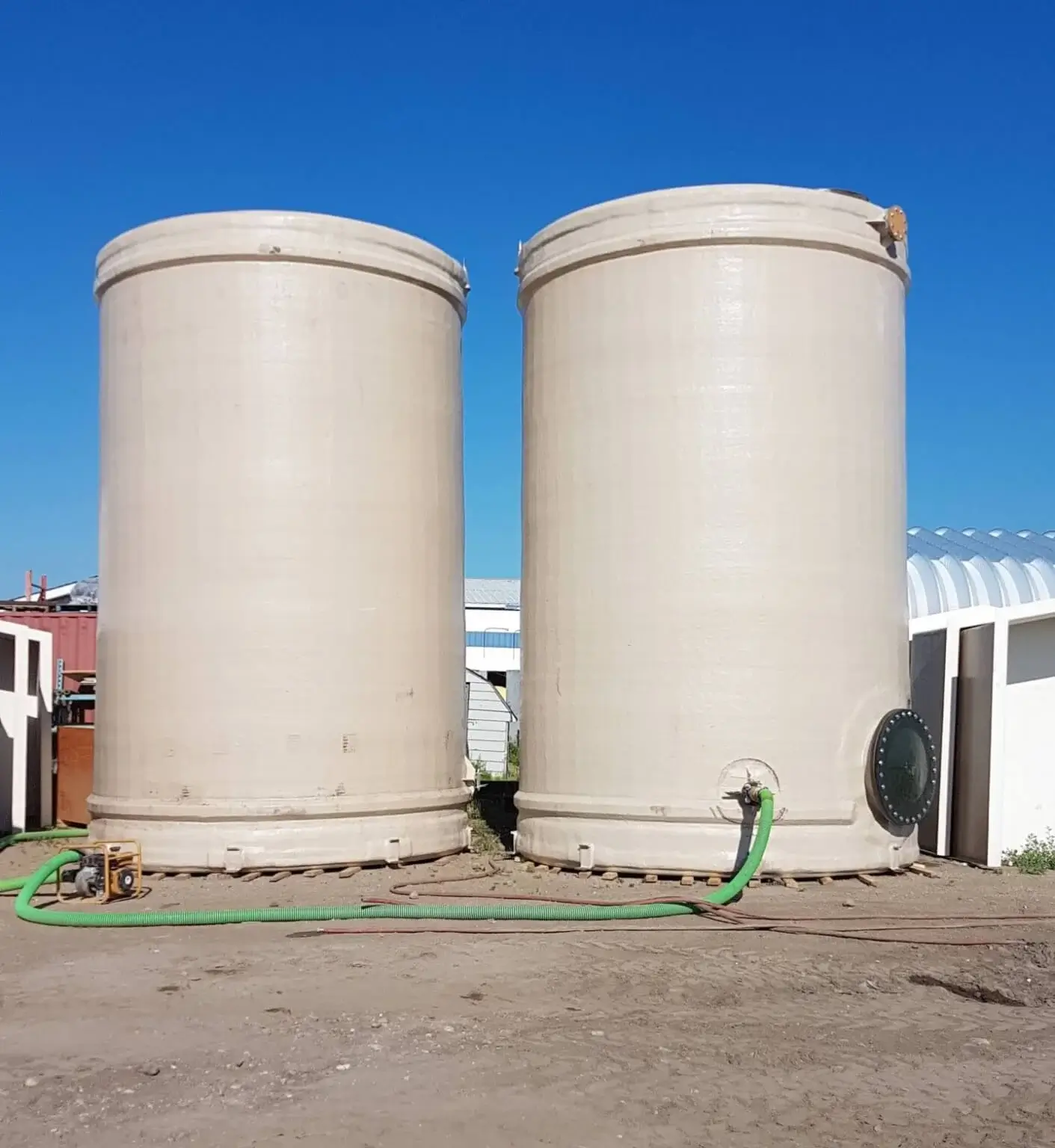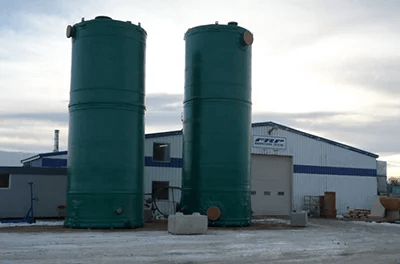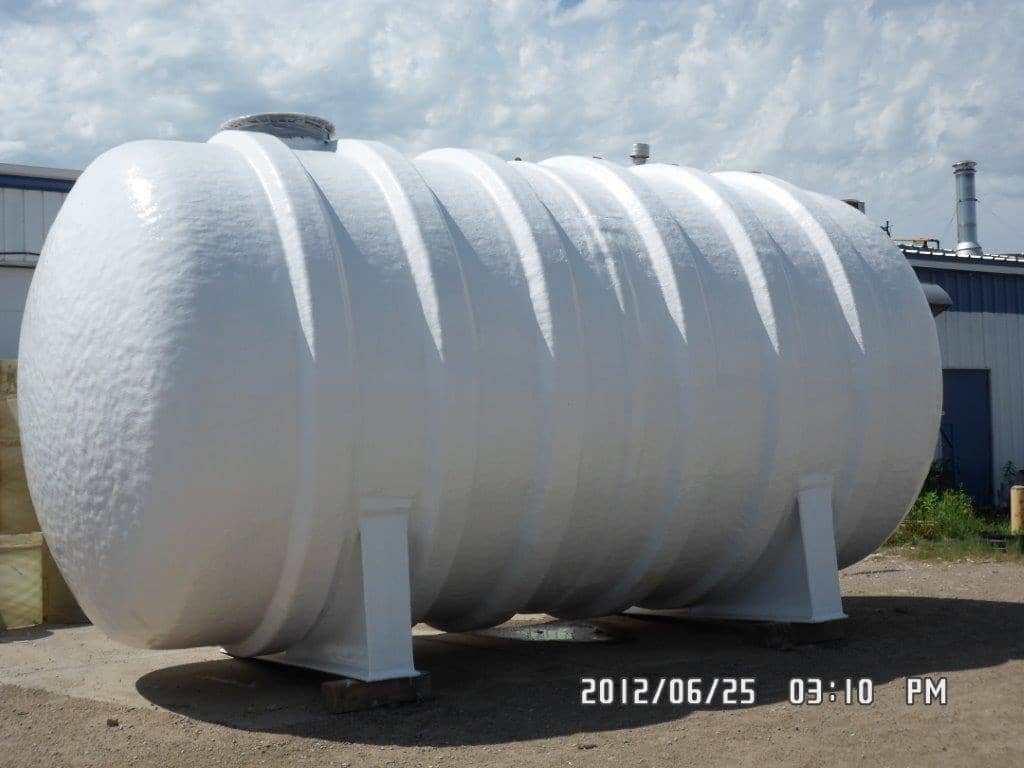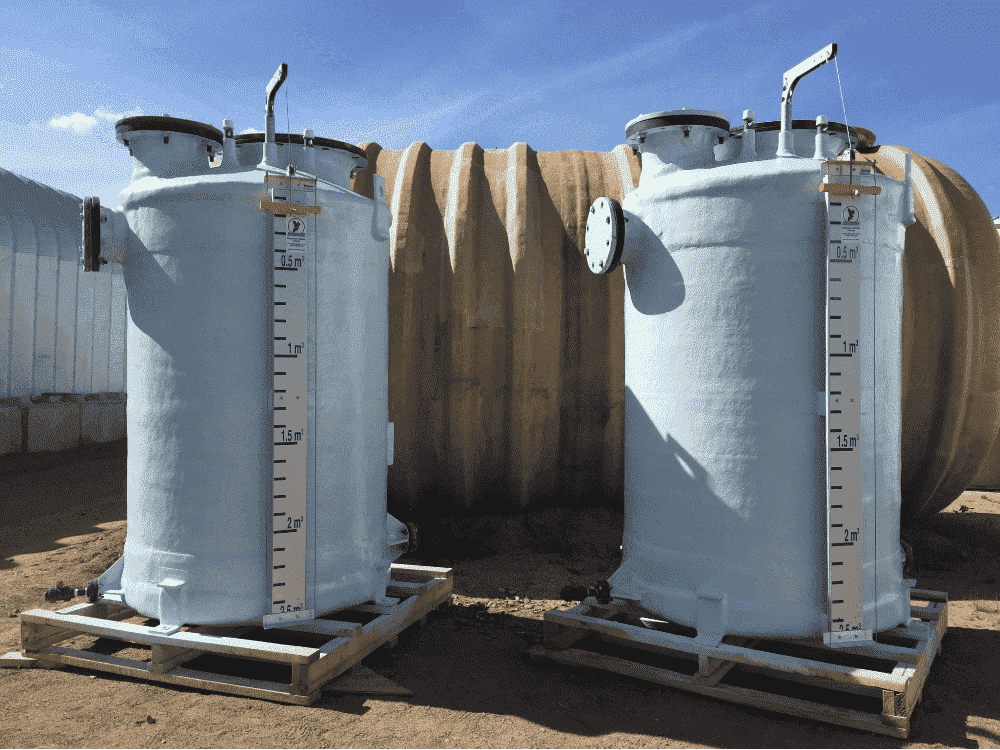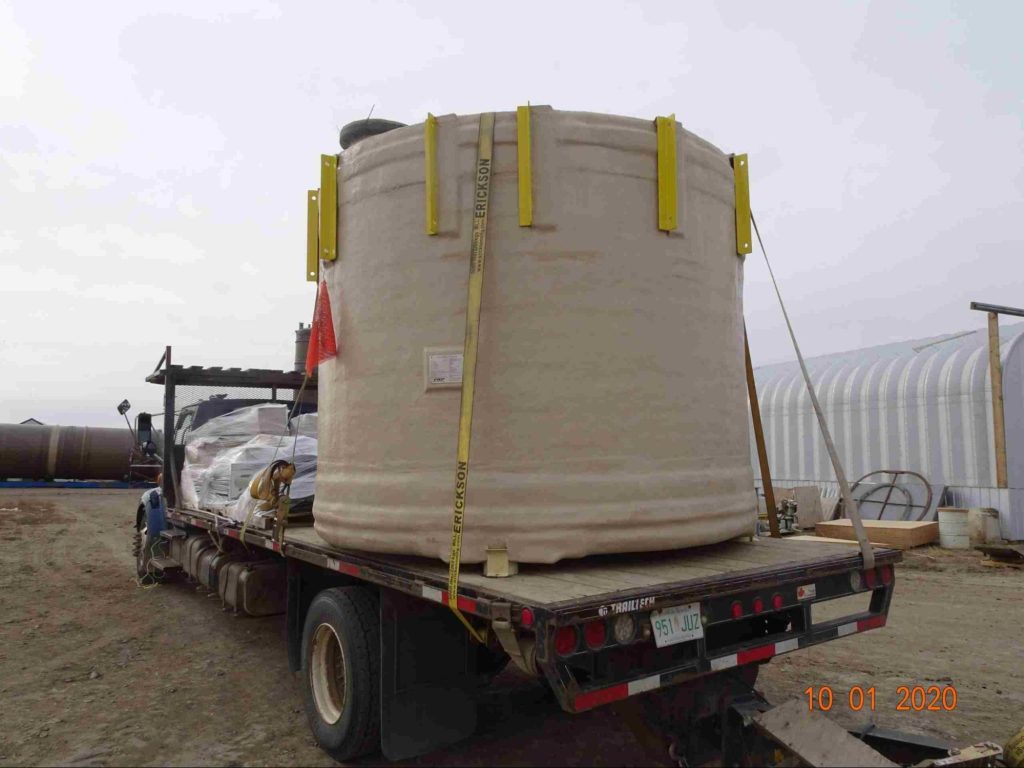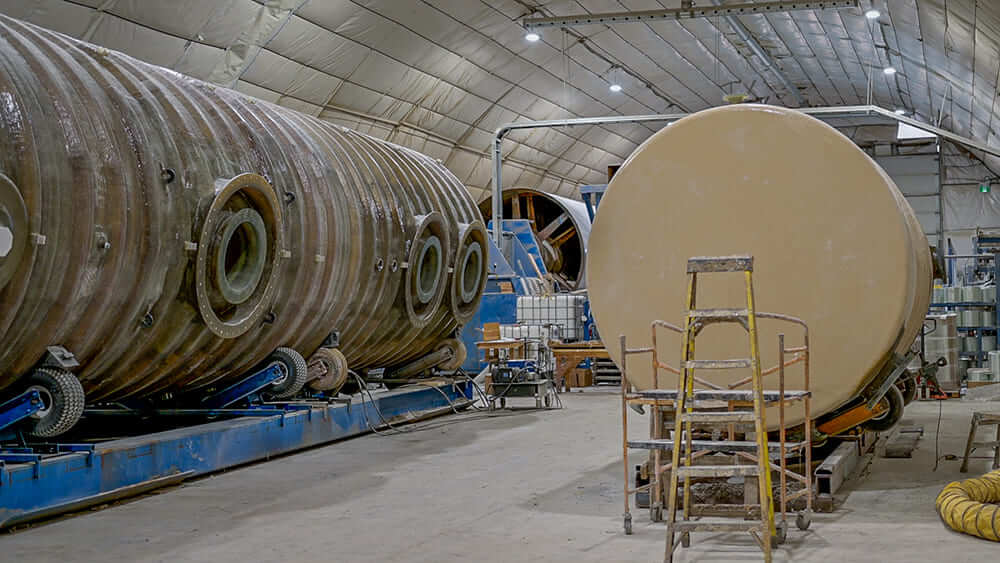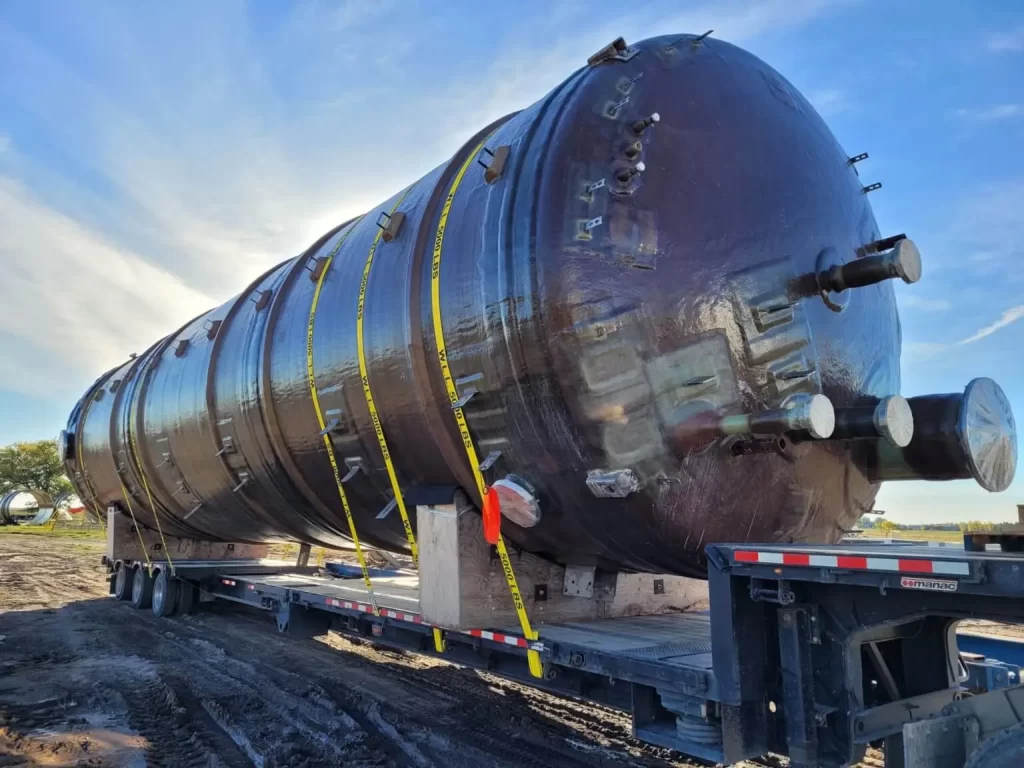Fiberglass reinforced plastic is a reliable, strong material used in the construction of storage tanks and it’s been a trusted staple in many industries, including chemical, oil and gas or wastewater, for the past several decades. There are a lot of pros to using an FRP tank for your storage requirements, but like any other material, FRP can still come with challenges. Here are the six common issues with fiberglass storage tanks and how to overcome them.
Rigid or Brittle
FRP is an incredibly strong material, but when you’re storing hazardous chemicals, the tank will need to be constructed from several layers in order to house the product safely. This causes the tanks to be more brittle or rigid, which can make them more difficult to transport. The solution to this is using the proper gear and loading the unit with care! Padding supports and cradles with straps to secure the tank to the truck bed will be the best way to get your tank safely to the site. Installing the tanks on a sand bed over concrete or with the correct bed and backfill is necessary to ensure the longevity of these tanks.
Seams
The connection seams between the ends of the tank and the shell can cause some limitations as these fittings are fused after the body of the tank has been constructed. With highly abrasive substances, it’s best to use a tank with fewer seams or choose a below-ground installation to shelter the tank from some environmental stressors.
UV Deterioration
Although fiberglass reinforced plastic tanks do have UV resistance, they won’t last in direct sun for decades if the proper materials aren’t used in construction or the maintenance of the tank is neglected. With tanks in above-ground locations in direct, harsh sunlight, the resin used for a tank will need extra protection from UV rays. The manufacturer uses a certain mix of resin, component qualities and layers to fit the requirements and usually, there is an additional coating added to the tank for protection. Additionally, the tank may need a coat of paint or two over its lifetime, but this will allow it to reside longer in the sunshine!
Lack of Maintenance
When we say that FRP tanks require a fraction of the amount of maintenance compared to other materials, we don’t mean that they need zero maintenance. There is upkeep required for these tanks to serve your storage needs for years and that can look like updating a faulty valve that could cause leakage or cracking in the area. The UV-resistant coating may need to be reapplied as necessary and routine inspections will ensure any abnormalities or damage is found and a solution can then be enacted quickly. Repairs are possible for FRP tanks, but it’s important to have expertise on site to guarantee a quality fix.
Long Term Temperature Resistance
Typically, off-the-lot fiberglass reinforced plastic tanks will be able to withstand high temperatures, but not for prolonged periods of time. The strength of the material deteriorates gradually with extended exposure above 50°C, but can withstand temperatures to 100°C for intermittent lengths of time. General-purpose epoxy can sit at 60°C before the strength begins to decrease, but there are reinforced resins made to hold up against 200°C-300°C that you can select for your build!
Reduced Elasticity
With additional layers for protection from caustic and toxic material storage, the FRP tanks can be more rigid than a steel tank and have a higher potential to deform. The way to combat this is by reinforcing the tank with ribbing and using a higher modulus of fibers to give better durability.
FRP tanks aren’t indestructible, but they can withstand and assist in some demanding industries. These tanks are built with quality and dedication, making them more reliable in severe environments. It’s crucial to communicate the requirements for your storage needs and we’d be happy to help you build the right tank for the job. Get in touch for a quote today or give us a call at (306) 392-4884 to discuss your options!

